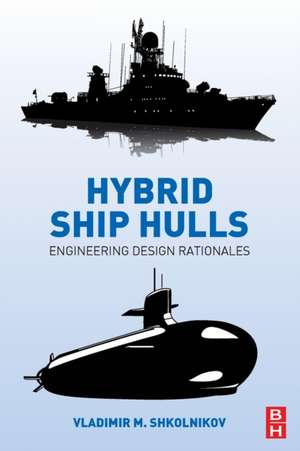Hybrid Ship Hulls: Engineering Design Rationales
Autor Vladimir M. Shkolnikoven Limba Engleză Paperback – 19 aug 2016
Supporting the design of effective hybrid hulls through proper consideration of the benefits and challenges inherent to heterogenic structures, the book covers specific details of quality control, manufacturing, mechanical and thermal stress, and other behavioral aspects that need to be treated differently when engineering hybrid ship hulls.
With a particular focus on heavy-duty naval applications, the book includes guidance on the selection of composite part configurations, innovative design solutions, novel hybrid joining techniques, and serviceability characterization.
- Addresses the engineering requirements specific to hybrid structure engineering that are essential for optimization of hybrid hull design and maximization of material benefits.
- Covers methodology, techniques and data currently unavailable from other sources, providing the essential base knowledge to support robust design, reliable manufacturing, and proper serviceability evaluation.
- Includes MATLAB codes, enabling engineers to easily apply the methods covered to their own engineering design challenges.
Preț: 723.90 lei
Preț vechi: 795.49 lei
-9% Nou
Puncte Express: 1086
Preț estimativ în valută:
138.53€ • 150.43$ • 116.37£
138.53€ • 150.43$ • 116.37£
Carte tipărită la comandă
Livrare economică 15-29 aprilie
Preluare comenzi: 021 569.72.76
Specificații
ISBN-13: 9780128103050
ISBN-10: 0128103051
Pagini: 200
Dimensiuni: 152 x 229 mm
Greutate: 0.29 kg
Editura: ELSEVIER SCIENCE
ISBN-10: 0128103051
Pagini: 200
Dimensiuni: 152 x 229 mm
Greutate: 0.29 kg
Editura: ELSEVIER SCIENCE
Cuprins
1. Premises of hybrid hull implementation2. Existing & prospective hybrid hulls3. Material-transition structures4. Comeld-2 development & performance evaluation5. Serviceability characterization6. Prospective investigationsAppendices
